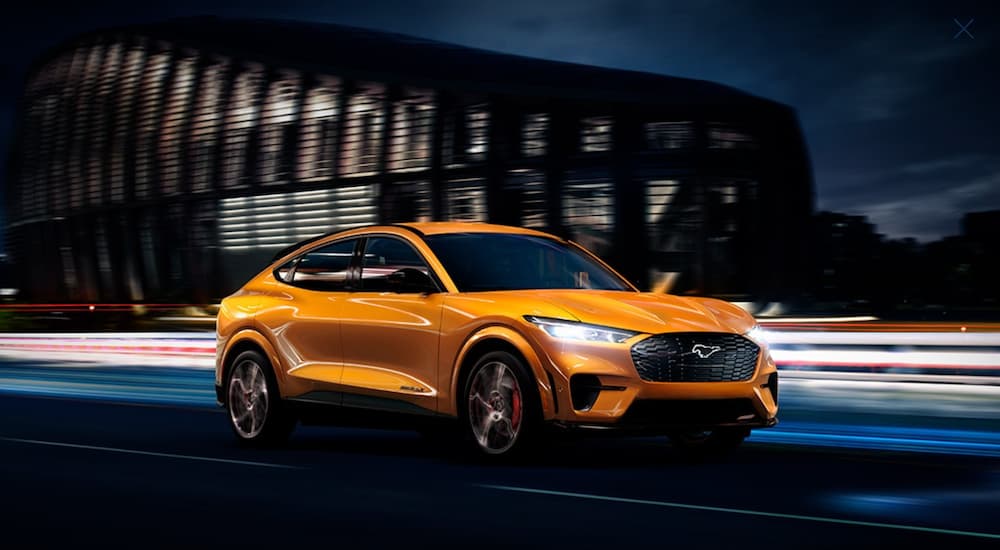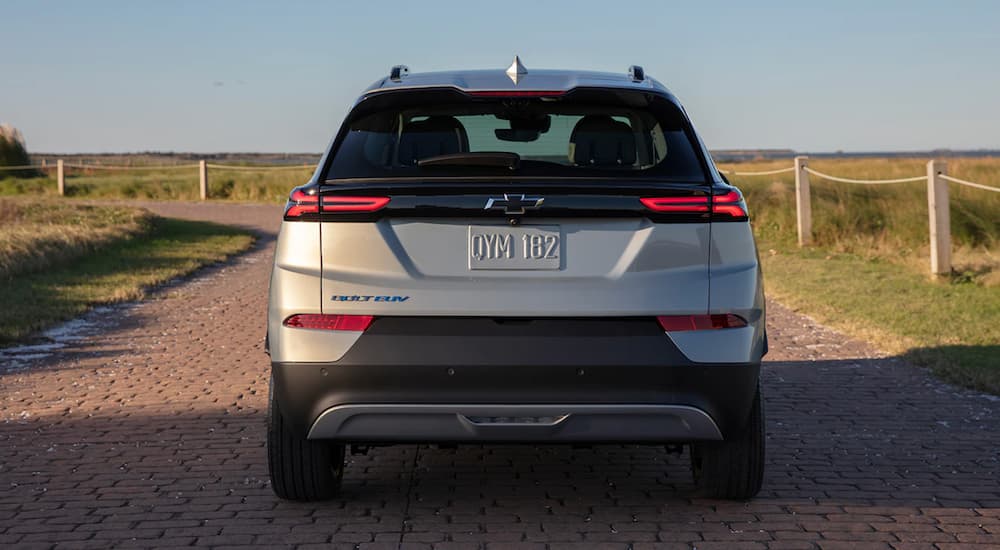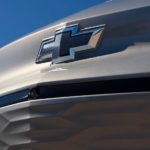Comparing the 2022 Chevy Bolt EUV vs 2021 Ford Mustang Mach-E will reveal two vehicles that are about as different as two electric crossovers can be. Built for different segments of the market, with somewhat different technologies, comparing the two requires one to factor in the dramatic price difference between the smaller Chevy and the medium-sized Mach-E. Depending on one’s needs, either could work very well. That said, the Bolt EUV will do everything one needs from a car and do it for ten thousand dollars less than the cheapest Mach-E. For this reason alone, most car buyers would certainly not need the extra content the Mach-E delivers, considering the significant price jump.
Electric Performance
To begin, let’s look at how the two crossover’s powertrains compare. The Bolt EUV is made to be lighter, simpler, and more affordable than most electric cars without sacrificing performance. The Mach-E, by contrast, works to be a solid counterpoint to the lower-end Tesla models, which compete in the luxury car market. This overall difference in purpose leads to significant differences in battery size, onboard charging systems, and motors. Put simply, the Mach-E is a perfectly passable electric crossover and quite a good performance crossover. But that comes with significant cost increases that most consumers would not choose to opt into. The Bolt EUV provides more than the average car buyer needs at a significantly lower price.
Batteries are the first large difference between the two crossovers. The Bolt EUV has a single battery option in the form of a surprisingly small 65 kWh set of cells. The Bolt’s relatively lightweight and efficient body design means that it makes the most out of this smaller battery pack, all while maintaining a 250-mile range and fast charging times. A larger battery, like the available 88 kWh pack stuffed into the floor of the Mach-E, does provide more electric “fuel” but costs and weighs significantly more.
These tradeoffs have knock-on effects throughout the rest of the vehicle experience. The Mach-E can be upwards of 900 pounds heavier than the Bolt EUV but can’t carry any more people. That larger battery also requires more advanced and expensive onboard charging equipment just to keep charge times on the large battery down. The cheaper variants of the Mach-E come with a smaller 68 kWh battery pack, but this ends up being undersized for the Mach-E’s bulk. So undersized that the claimed range of this variant is as little as 211 miles – significantly less than the base model Bolt EUV, despite the Mach-E’s base model being ten thousand dollars more expensive than said longer-range Bolt EUV.
The Mach-E is a great option for fifty thousand dollars, but at any price, it offers significantly less bang for the buck than the plucky little Bolt EUV. The Bolt EUV delivers a premier package of power, range, usability, and convenience that is simply unmatched in its price bracket. Even above its price bracket, the Bolt EUV’s 200 horsepower, less than two-ton weight, and 250 miles of range will humble many more expensive electric vehicles.
Modern Infotainment and Safety Technology
The differences between the two electric crossovers continue inside. The larger and more expensive Mach-E opts for a less traditional interior dominated by a massive central screen, while the Bolt EUV keeps things straightforward and familiar with a generous 10.2-inch infotainment screen sleekly integrated into the dashboard.
In terms of actual infotainment capabilities, the two crossovers are roughly evenly matched. The Mach-E uses Ford’s new SYNC 4A infotainment system, while the Bolt EUV relies on the latest Chevrolet infotainment architecture. Both of these systems allow the driver and passengers to connect their mobile devices to the vehicle entertainment systems, with the ability to play music and more. The Bolt EUV has the ability to use in-vehicle apps to broaden what the little crossover can do and is also Alexa compatible with voice command integration. While on the move, both the Mach-E and Bolt EUV will keep their occupants connected, though the Bolt EUV seems to have the edge.
Both crossover SUVs use their company’s latest and greatest driver assist systems, which are rapidly approaching semi-autonomy. The Ford uses Co-Pilot 360 2.0, while the Bolt EUV uses a combination of Chevy Safety Assist and the high-end Super Cruise system. Both systems largely have the same potentially life-saving safety features, such as automatic emergency braking, blind-spot detection systems, and advanced lane-keeping systems. That said, if you are looking for hands-free driving, the Super Cruise system has 200,000 miles of compatible roads and has racked up over 7 million miles in the hands of customers. In contrast, Ford’s hands-free technology only works on 100,000 miles of roads and has yet to be released to the general public.
A surprising area the Bolt EUV appears to be ahead of the much more expensive and larger Mach-E in is comfort and amenities. The Bolt features available heated and ventilated front seats, as well as available heated outboard rear seats. These features are curiously absent from the current Mach-Es. The Bolt EUV has three inches more rear legroom than the normal Bolt EV hatchback, turning a livable backseat experience into a comfortable one. Ford invested heavily in the powertrain and exterior of the new Mach-E, and on the higher trim level models, it shows. That said, for people who are unwilling or unable to spend sixty thousand dollars on a car, the Bolt EUV undercuts the Mach-E in price to a shocking degree, all while offering more interior features in a smaller and more nimble package.
Design and Handling
Both the Bolt EUV and Mach-E use the now tried-and-true construction technique of unibody design. Fusing body and frame into a single entity, this type of structure makes for much lighter and more efficient vehicles than the ladder frame designs of a century ago. A new addition to the unibody is the battery. The battery of any electric vehicle is going to make up a huge portion of its weight, and the designers of electric cars have had the good sense to place said batteries under the floor, where they are both the least obtrusive and the safest. In fact, because of the floor-mounted batteries, modern electric vehicles of just about any type are almost impossible to roll over, and even when they do, it is in some cases physically impossible for them to stay on their roofs.
While the safety implications of this design feature are vast, the advantages of having the vast majority of the vehicle’s weight below the axles don’t end there. Handling is also dramatically improved, with cars both cornering flatter and feeling much more stable through high-speed turns. The higher-end variants of the Mach-E use all of these factors to create a performance crossover that can do the school run with ease and also be fun. The Bolt EUV provides that electric handling and torque to everyone, not just those with extra money to electrify.
The Bolt EUV Is the High-Value Option
While the Bolt EUV and Mach-E are very different vehicles, developed for different purposes and marketed to different people, most would be better served by the Bolt EUV. The main reason for this is price, considering the huge jump from the base Bolt EUV to the base Mach-E. The most striking display of the greater value delivered by the Bolt EUV is that it actually has better performance in some important metrics, including range and technology, when compared to the base Mach-E. The Bolt EUV is an electric crossover for everyone, and we expect to see many of them out on the road.






